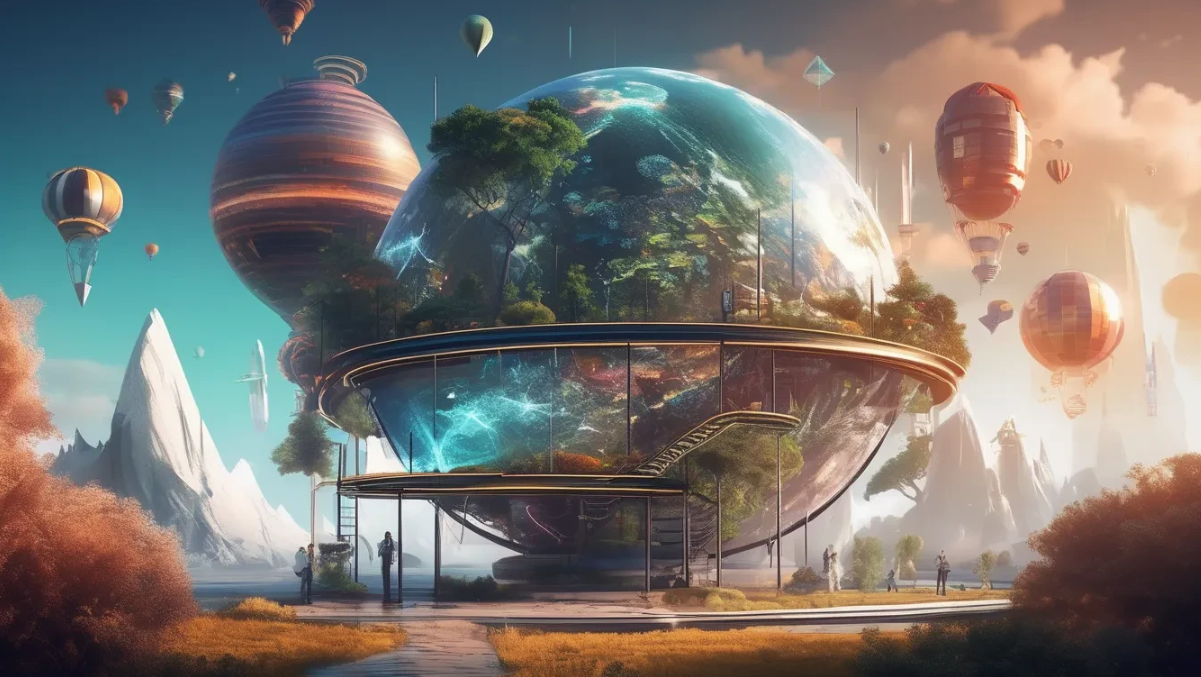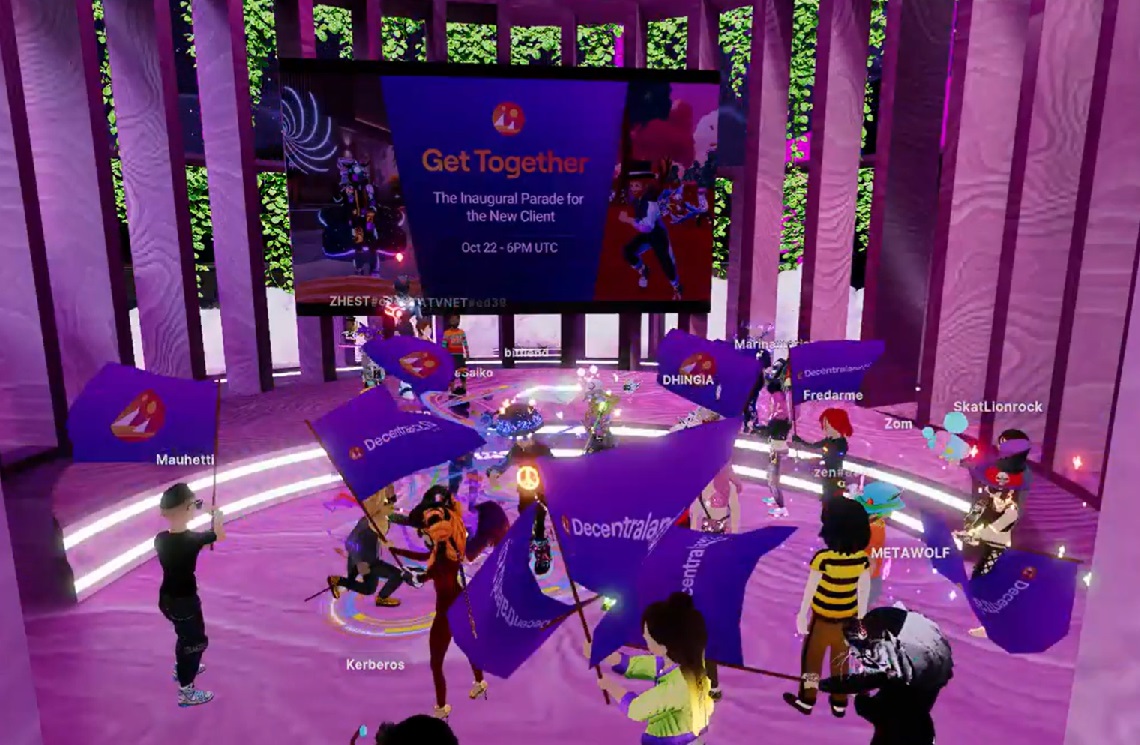
Skillsets that can transition you into creating in the metaverse
Creating in the metaverse involves designing experiences and games or building a metaverse platform from scratch. Although this is somewhat similar to creating regular games, the metaverse features unique technologies. Most of these technologies (e.g., web3 and blockchain) are irrelevant to traditional artists. Thus, to create in the metaverse, you might need to acquire skills that you did not have before as a traditional digital artist.
In this article, Sandstorm will explain the top 6 skills that can help anyone become a metaverse artist. At the same time, artists that used to create traditional experiences can learn the skills and transition into the metaverse industry.
Skills you need to create in the metaverse
3D design
The metaverse is a 3D digital space. This description is suitable for an immersive digital world because the physical world is three-dimensional. Accordingly, artists transitioning into creating in the metaverse must understand how to design complex 3D artworks and virtual spaces.
Meanwhile, there are two most popular ways to create 3D designs in the metaverse. The first method is through 3D modeling. When building a 3D model, metaverse artists could find software programs like Adobe Dimensions, AutoCAD, and AutoQ3D helpful.
Also, 3DVIA Shape allows new artists to build free 3D models and share them with a community of experienced artists. After perfecting the skill, such artists can transition into creating 3D platforms or metaverse scenes for brands.
Secondly, you can create 3D designs using voxel art. Voxel art is created using pixels to construct 3D illustrations, images, and all designs. It is often created with software known as voxel editor.
A suitable description of voxel art is Pixels, a movie produced by Adam Sandler in 2015. In this movie, digital objects and game characters were made of square boxes. Similarly, all the objects and avatars in the open-source virtual world of The Sandbox are made of voxels.
To create a voxel image, artists must properly combine 3D square boxes on a voxel editing software. This differs from creating 2D artwork because 2D images only have height and width. In contrast, the 3D pixels used in creating voxels have height, width, and depth.
While it is possible to use regular software for constructing voxel art, most 3D artists cannot write the positions and dimensions of a 3D pixel in a text file. This has created the need for special software programs known as voxel editors. Notable voxel editing tools include MagicaVoxel, Mega Voxels, etc. In addition, The Sandbox metaverse has a free voxel software called VoxEdit.
Artists who plan to become metaverse creators must learn to create games or in-game characters, digital structures, and imaginative objects with Voxel editors.
Creating with Blender
Learning how to use Blender brings you closer to becoming a metaverse creator. This free tool can help you design anything you may think about and export your design to a metaverse platform.
Blender is what you need to create digital sculptures for a metaverse experience. For instance, sculpting can be an effective way to design the characters in a virtual experience. In that case, Blender provides a dedicated workspace, brushes, and dynamic topology needed to create amazing and unique digital characters.
Also, Blender allows you to tell stories while creating in the metaverse. You can achieve that by drawing objects in 3D using the Blender “Grease Pencil Object” in combination with other Story Art tools. Moreover, Blender is the perfect rendering engine for designing 3D games for metaverse platforms.
Animation
Animation is how an artist defines the activities of each game character or asset in a virtual environment. Each object or character will then move, behave, or interact with the environment as animated. Similarly, artists can use animation to define how a metaverse environment react to new assets, what happens within it when those things happen. As a skilled animator, you can work with brands to design interactive worlds. Meanwhile, this requires using software programs like Maya, Unity Engine, Adobe Animate, Blender, etc.
Coding Skills
Creating in the metaverse is different from software development or in-depth blockchain development. Thus, you don’t need years of coding experience to use your skills in the metaverse sector. On the contrary, you need a basic understanding of languages like Javascript or others.
For example, Javascript is essential when creating an experience or game on the Decentraland metaverse because the Decentraland SDK involves coding with Typescript. Also, if you plan to create experiences with Blender, learning Python would help you write better text files and build more compelling scenes.
At the same time, artists can learn programming languages of specific blockchain networks (e.g., Solidity for Ethereum, Rust for Solana). By learning those languages, an artist might be suitable to work for teams or get hired by companies looking to build new metaverse platforms. A web3 virtual world (e.g., The Sandbox) is always compatible with its host blockchain. Thus, artists working on those kinds of projects might need to learn the basics of the programming language of such blockchain.
Web3.0
Web3 refers to decentralized ownership of digital assets, mostly made possible with the blockchain. If you have not held digital assets in a mobile wallet, or connected your wallet to a decentralized platform, then you need to learn how web3 works.
Artists transitioning into metaverse creators will increase their chances of success when they learn about web3. This is due to the increase in web3 metaverse startups led by a general boost in the crypto and NFT industry. Of course, large companies are also making their debuts into the metaverse sector, making the party more enjoyable.
After learning about web3, you can join us at Sandstorm, where we link creative artists with brands. Here, you can create metaverse experiences for a living, and brands can also find the best metaverse builders for hire. Meanwhile, there is one more skill that you will need when transitioning into a metaverse creator.
Project Management and Entrepreneurship
Metaverse creators will have the opportunity to work for companies in multiple of metaverse projects. In some cases, they will have to work on more than one projects at once. With project management skills, a creator can get organized and learn how to deliver projects within given deadlines. In addition, you can develop the needed skills to turn the best jobs in within the time frame a client gives.
Meanwhile, those creating in the metaverse must also become entrepreneurs at their jobs. They need to market their skills, and learn how to calculate the time and money cost of every project before calling a price. Entrepreneurship skills is what can help you turn your passion for creating in the metaverse into a successful career.
Creativity and Uniqueness
You don’t want to design what someone else has done. Yet, creativity goes beyond that. Therefore, designing 3D models, voxel artworks, or experiences that tell compelling and interactive stories will always help new artists keep their jobs.
Keeping the metaverse experience and its characters interesting allows you to seamlessly transition into a new type of job – creating in the metaverse.


